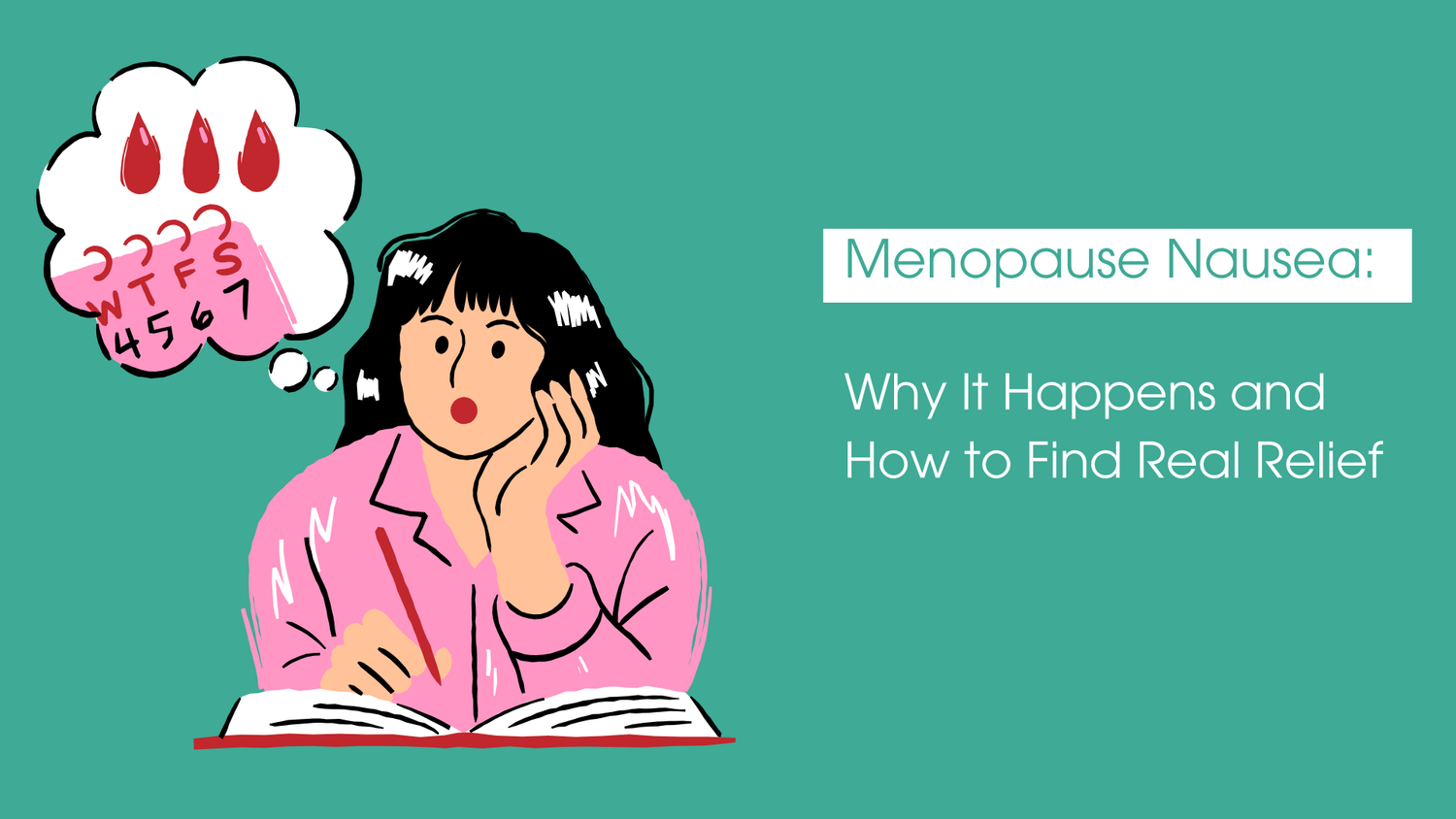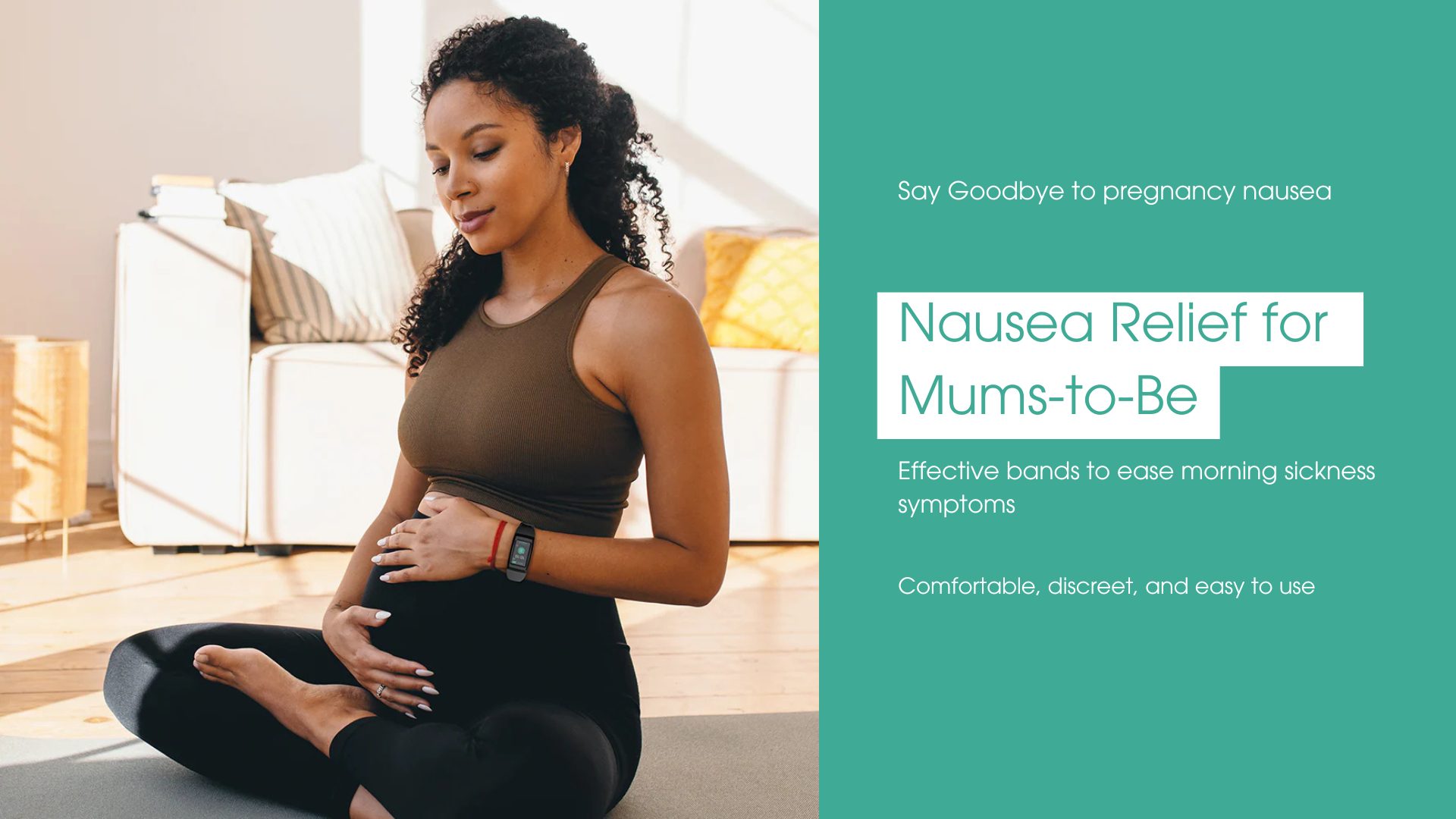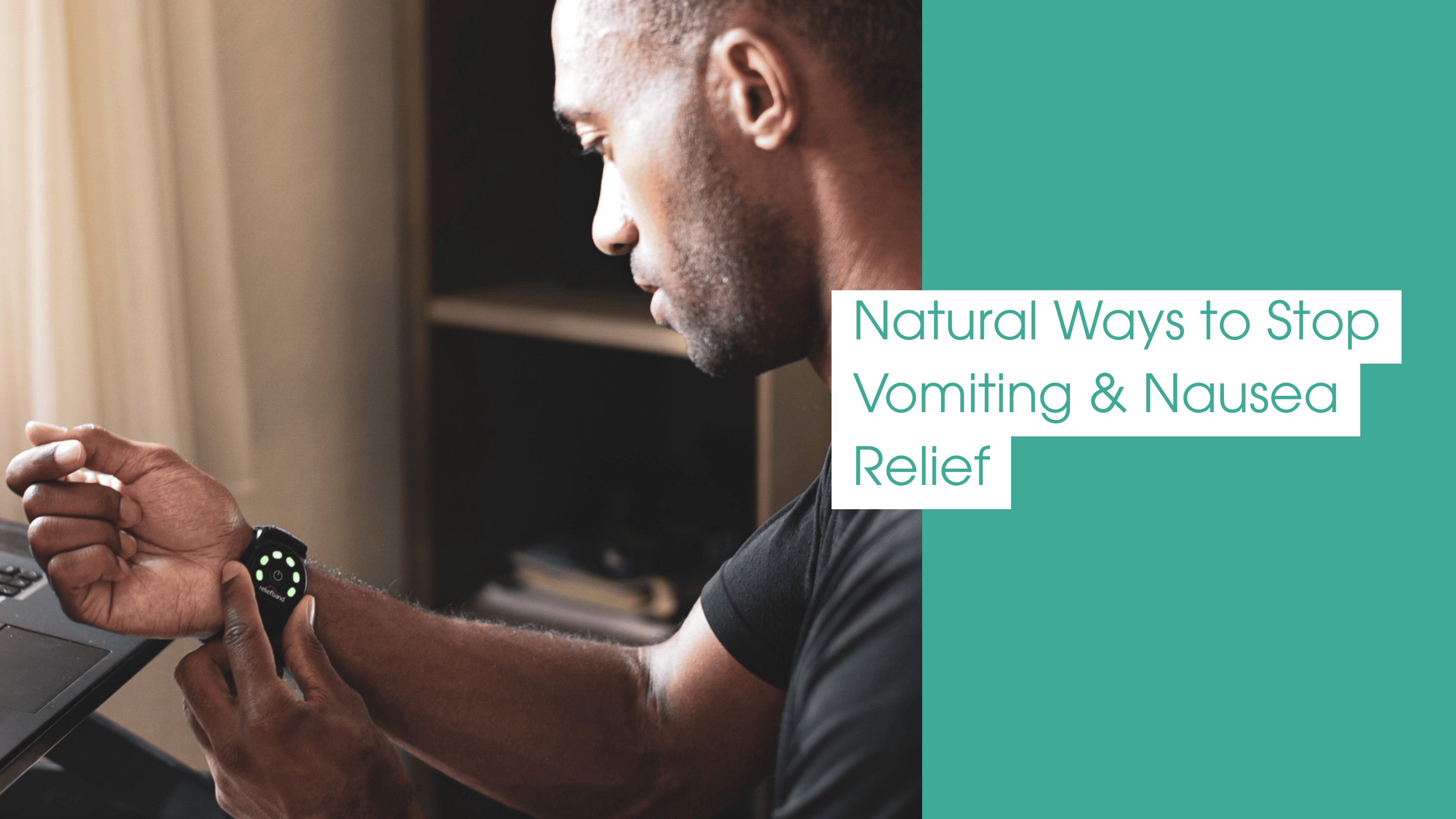Nausea during menopause and perimenopause is common but often overlooked. While medications can help, natural options like hydration, balanced meals, and Reliefband’s wearable, drug-free technology offer quick, effective relief without side effects.
Hot flashes and mood changes are well-known menopause symptoms, but nausea can also appear as hormones fluctuate. For many women, queasiness, dizziness, or stomach discomfort are unexpected parts of the transition through perimenopause and menopause.
If you’ve been wondering why you feel nauseous or how to stop it, this guide explains the causes, compares medications to natural options, and introduces a new way to relieve menopause nausea safely and effectively.
What Causes Nausea During Menopause and Perimenopause?
Fluctuating hormone levels—particularly estrogen and progesterone—affect more than just mood and temperature. They also influence digestion, blood sugar regulation, and the brain’s nausea center. That’s why some women feel nauseous during hot flashes, after eating, or even at random times throughout the day.
Other contributing factors include:
- Blood sugar changes from irregular meals
- Anxiety, stress, or poor sleep
- Hormone therapy or supplements
- Hot flashes and dehydration
- Low iron or vitamin deficiencies
Traditional Medications for Menopause Nausea
Doctors may recommend over-the-counter (OTC) or prescription nausea medications. These work by blocking the signals that trigger nausea in the brain and stomach.
However, many of these options cause side effects like fatigue, constipation, or dry mouth. They can also interfere with hormone therapy or other medications, making them less suitable for long-term relief.
Natural Remedies for Nausea in Menopause
Natural approaches can often provide steady, side-effect-free relief. By supporting your body’s natural balance, these strategies can reduce nausea and improve overall wellbeing.

Try these simple lifestyle tips:
- Eat smaller, more frequent meals to stabilise blood sugar.
- Stay hydrated, drink water throughout the day.
- Avoid heavy or spicy meals when you feel queasy.
- Limit caffeine and alcohol.
- Use relaxation techniques like deep breathing or yoga.
- Try ginger tea, peppermint oil, or acupressure wristbands.
Reliefband: A Drug-Free Solution for Menopause Nausea
Reliefband takes the concept of a wristband for nausea to the next level. It uses precise, gentle electrical pulses to stimulate the median nerve on your wrist, communicating with the brain’s nausea centre to restore balance.
This technology, called neuromodulation, has been clinically proven to relieve nausea in minutes without medication or side effects. It’s fully drug-free, non-drowsy, and safe to use alongside hormone therapy or supplements.
Medication vs. Reliefband: Which Works Better?
Here’s how traditional anti-nausea medications compare with Reliefband’s modern approach:
- Speed: Medications can take 30–60 minutes; Reliefband often works in minutes.
- Side Effects: Drugs may cause fatigue or dry mouth; Reliefband has none.
- Convenience: Pills require planning; Reliefband can be worn anytime.
- Reusability: Reliefband is reusable and long-lasting.
- Compatibility: Works naturally without affecting hormone treatments.

Perimenopause Nausea: When Hormones Fluctuate Most
During perimenopause, the transition leading up to menopause, hormone levels swing unpredictably. These fluctuations can trigger nausea similar to PMS or early pregnancy. Managing stress, getting regular meals, and using a Reliefband during high-symptom days can help maintain comfort.
Finding Balance and Relief
Menopause nausea can be frustrating, but it’s a sign of your body adjusting to hormonal change. By understanding the triggers and finding the right relief method, you can manage symptoms and feel more like yourself again.
For women looking for a safe, effective alternative to medication, Reliefband offers quick, drug-free relief you can trust. Explore the full range available in Australia at reliefband.au.



